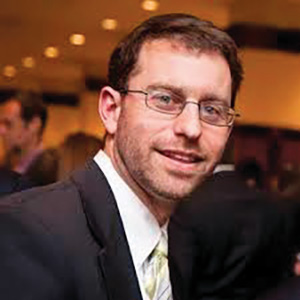
“And you shall count for yourselves, from the day after the day of rest, from the day that you bring the Omer offering, seven complete weeks shall there be. You must count until the day after the seventh week, 50 days. Then you shall bring an offering of new grain to Hashem.” (Vayikra 23:15-16)
How should we view these two seemingly contradictory pesukim? Are we obligated to count 49 days or 50 days? Pasuk 15 implies that we should count seven complete weeks, totaling 49 days, whereas Pasuk 16 implies we should count 50 days. And is there a lesson to be learned from this ambiguity?
Rabbi Asher Ben Yechiel, better known as the Rosh, in his commentary on Pesachim, in Siman 40, answers that the Torah will commonly round up to the nearest 10 when the differential is one. He gives two other examples to demonstrate this rule:
1) The Torah states in Devarim 25:3 “arba’im yakenu—40 lashes shall be administered to him,” even though only 39 lashes are administered.
2) The Torah states in Bereishit 46:27 that “Kol hanefesh leBeit Yaakov haba’ah Mitzrayma shivim—All the souls from the house of Jacob who came to Egypt totaled 70.” The Torah lists the names of those who came to Egypt. There are only 69 names in this list.
I offer a second explanation to this numeric discrepancy.
The Torah uses two sets of numbers in all these cases because each number reveals a different insight about the topic at hand. One number relates the reality of the situation, while the other teaches us a lesson about a desired ideal:
The Ramban notes that the punishment of 40 lashes corresponds to the 40 days that Moshe received the Torah. The Torah is perfect and Moshe required 40 days of study and purification to receive it. The goal of malkut, like any punishment, is purification. When one sets out to do teshuva, one aspires to complete repentance. Perfection is impossible to attain, but we try to do our best and maintain an awareness that complete purification is the ultimate desired goal. This is why we receive 39 lashes while the Torah states the number 40. We are reminded that even after receiving lashes the sin has still had a negative effect on us and the stain is not totally removed. Forty represents the perfect number in this case: a number that we strive for but will never quite reach.
As for the 70 souls, let’s begin with why Yaakov’s family went down to Egypt. Food was plentiful in Egypt but there was an additional aspect to their journey. This was also a journey for the sake of purification. Their time in Egypt was a necessary prerequisite to prepare them to travel to Israel as a nation. Rashi explains that while there were only 69 individuals who traveled to Egypt, Yocheved was a fetus in her mother’s womb. She was the 70th individual. Yocheved was the mother of Moshe, the future savior of his people. Pregnancy symbolizes latent potential. Yocheved represented the future of the Jewish people. The number 70 represented the fullness that would be required for them to leave Egypt and begin to head to Israel. As such, Moshe was the missing link, present in potential, so that the Jewish people could fully complete their purification process on their way to Israel.
We can apply the same “room for growth” concept to Sefirat Ha’Omer. We begin our count on the second day of Pesach. Had we begun our count on the day we left Egypt, we would be counting to 50. The Sefer Hachinuch argues that we don’t start our count on the first day of Pesach because the focus on that day is exclusively the miracles of the Exodus. There is no room on that day for any other focus, including the beginning of Sefirat Ha’Omer. I would add that in counting to 49 we acknowledge that there is still room for more growth, even beyond the end of the count. While the count to 49 fulfills my obligation of Sefirat Ha’Omer and it completes my spiritual path toward Shavuot, I recognize that there is still more room for growth, as symbolized in the number 50—a number I have not reached.
“Room for growth” is a powerful concept that we can take from the two pesukim we started with and apply to our everyday experience. As an educator, I have observed students who get trapped in the pursuit of perfection. This pursuit inhibits their ability to move forward, as they write an essay, and rewrite it and rewrite it again, unable to complete it. The Sefirat Ha’Omer paradigm gives us a model that we can teach them to emulate. Strive for excellence or greatness, but recognize that even after you have seen success, there will always be room for growth.
By Rabbi Daniel Alter
Rabbi Daniel Alter is the head of school at Moriah.









